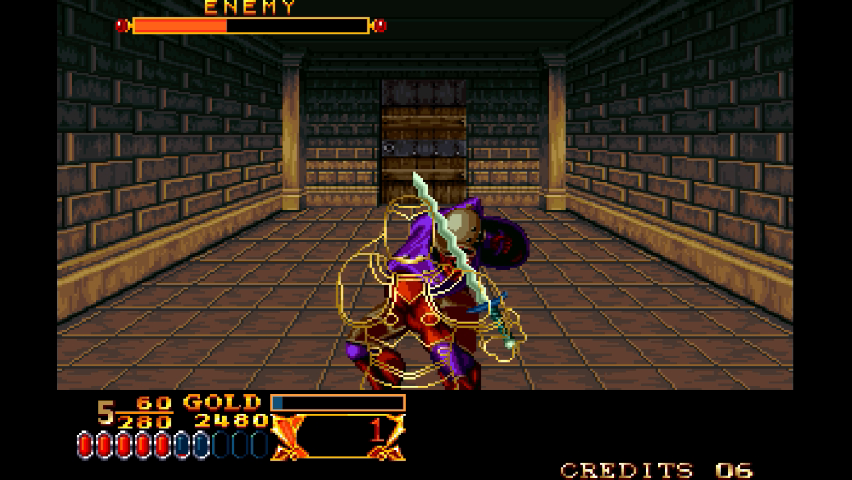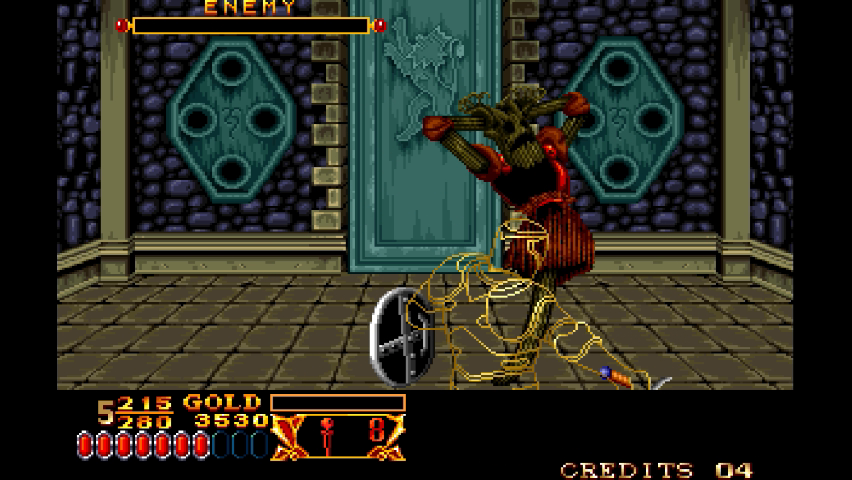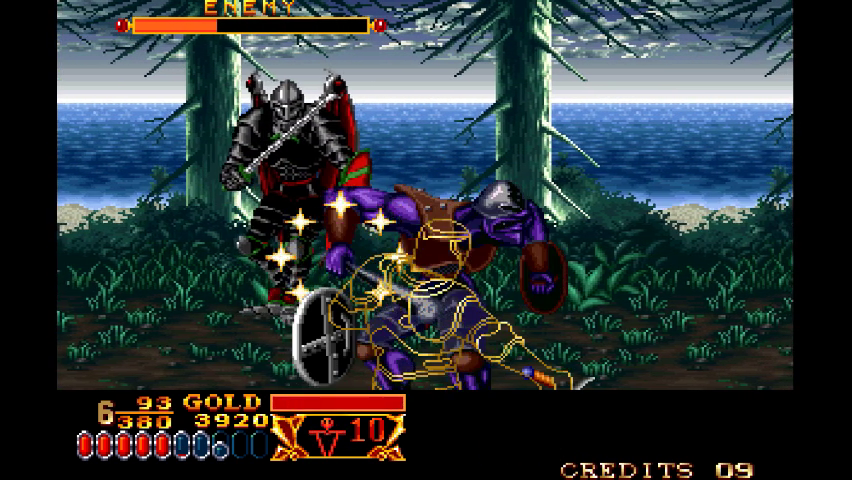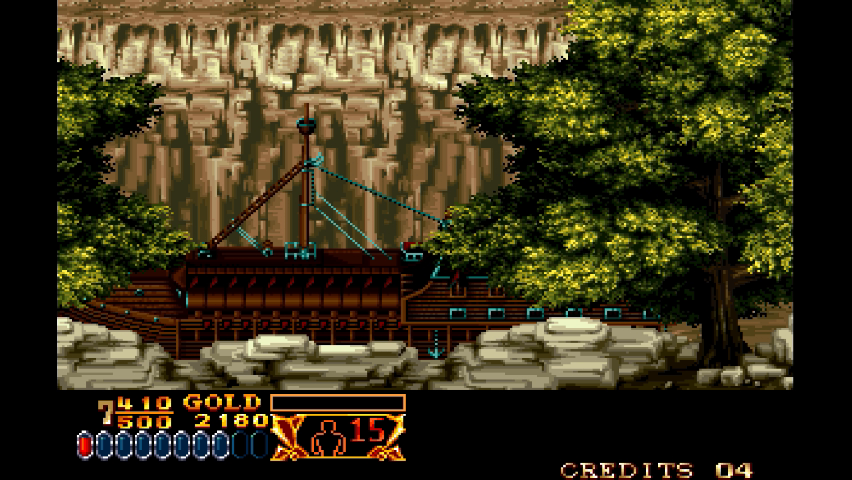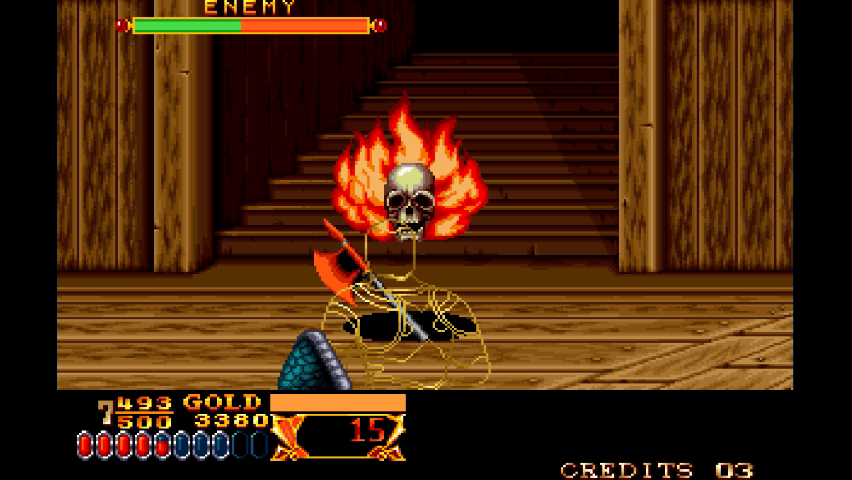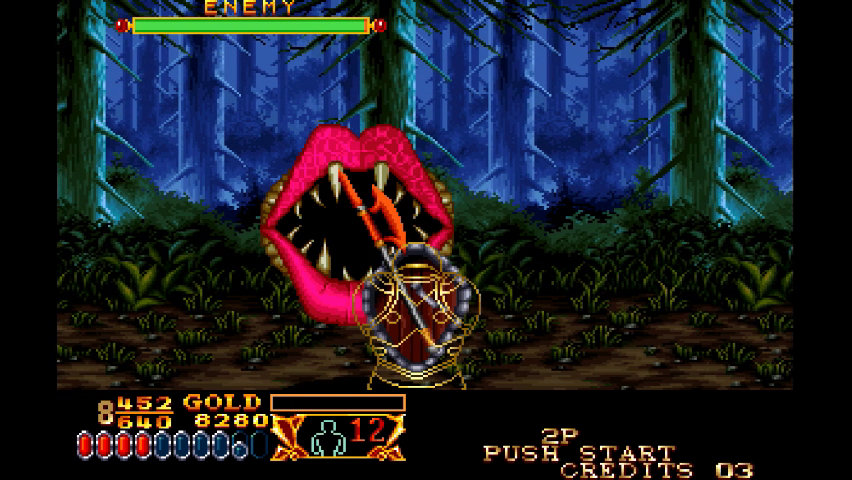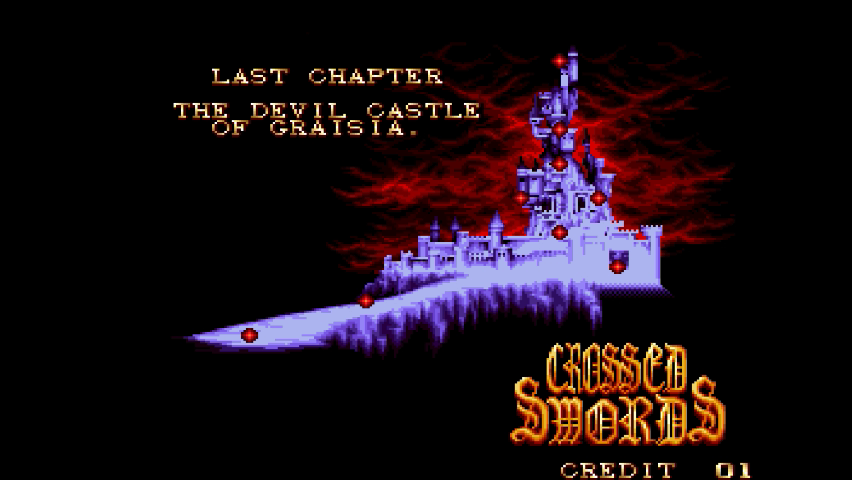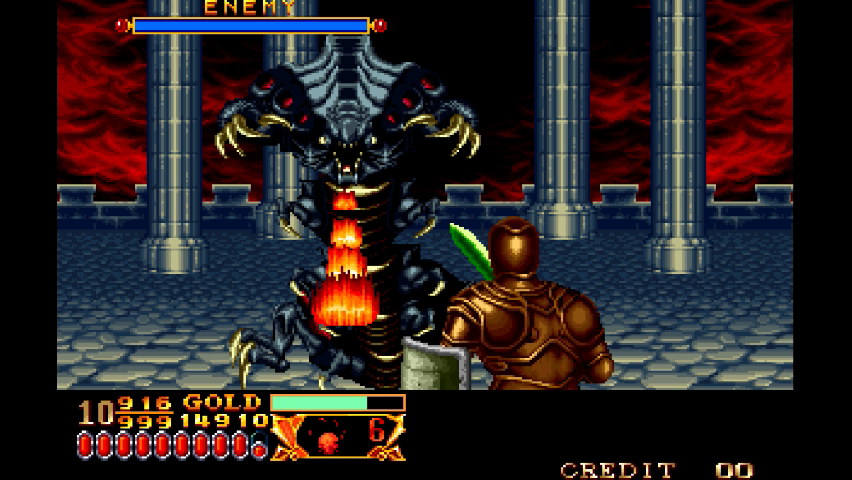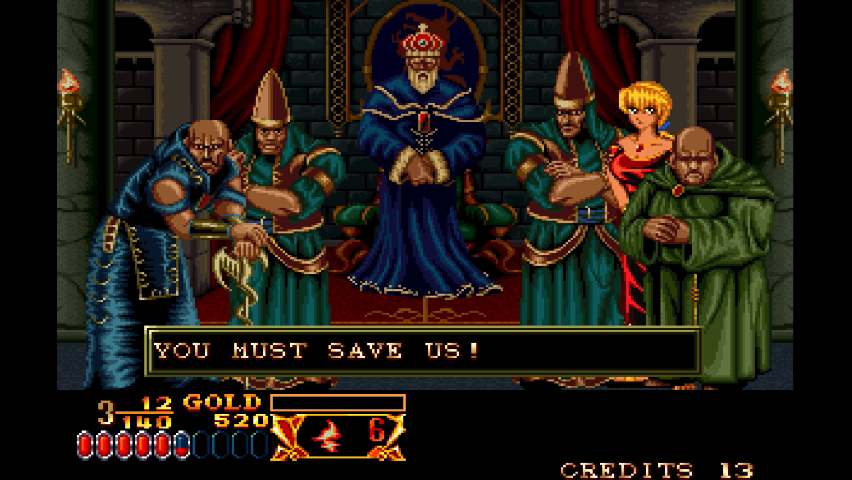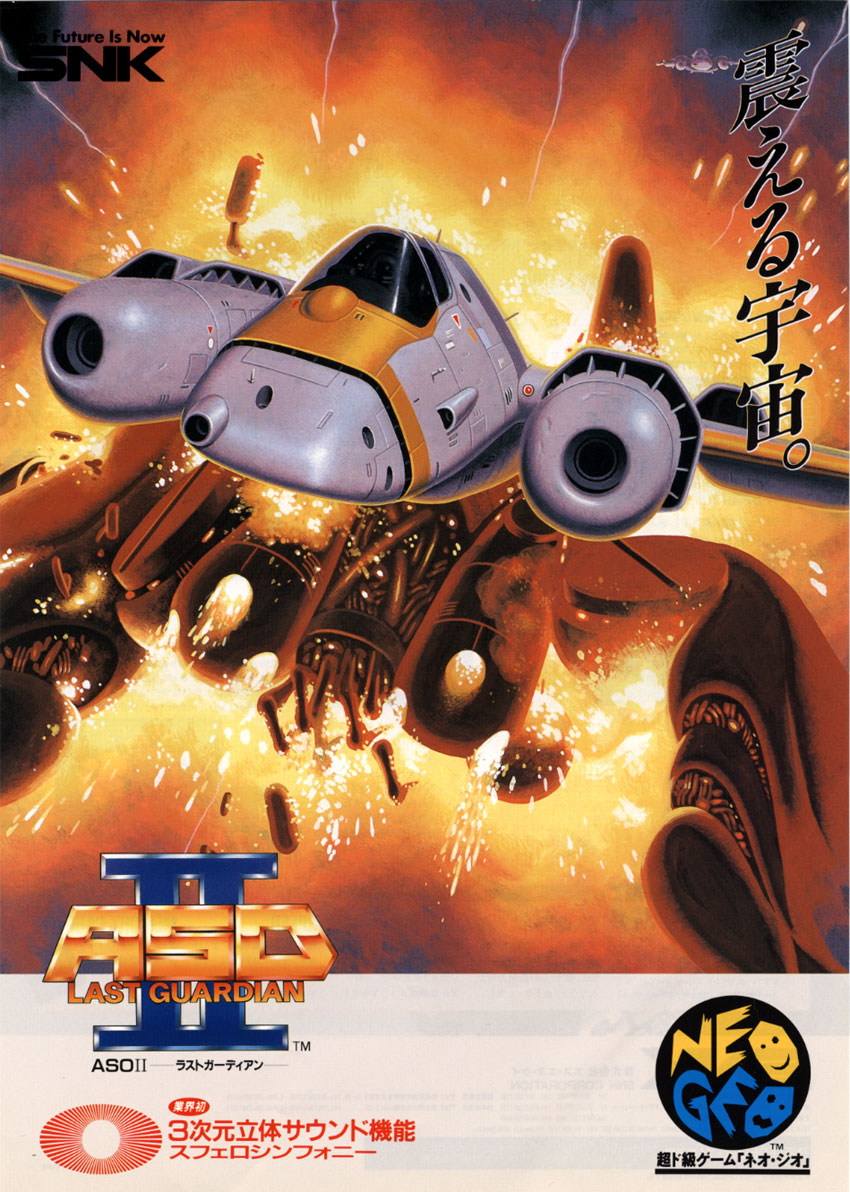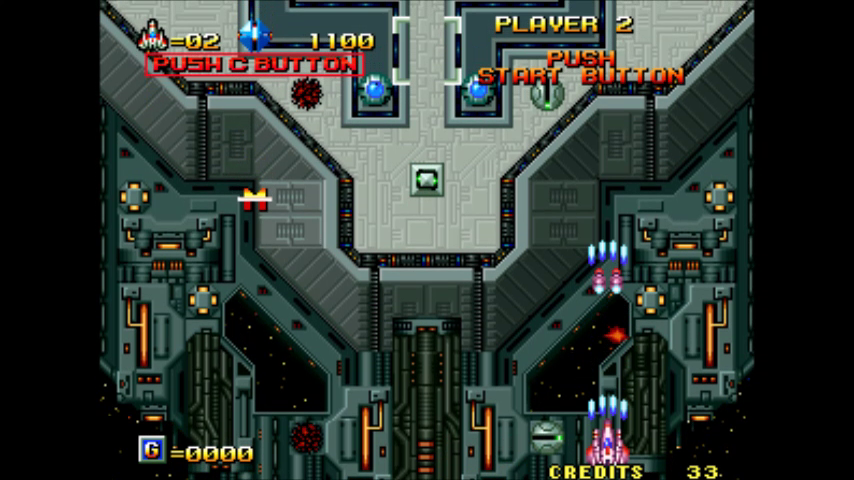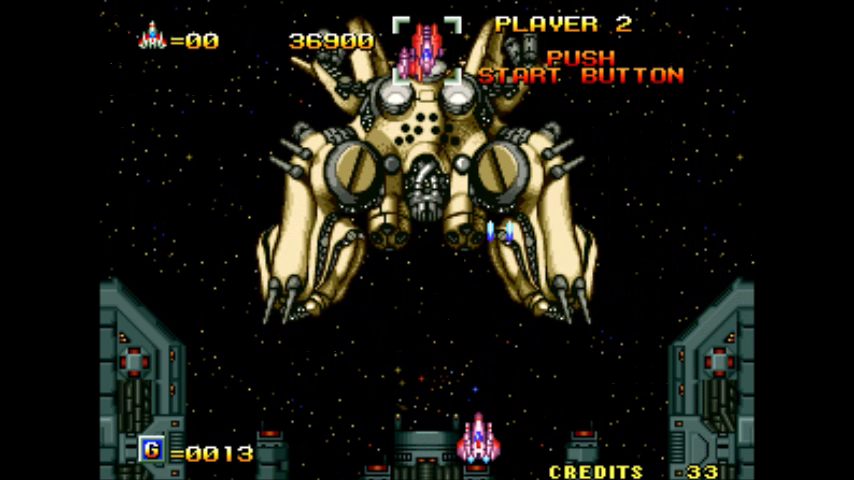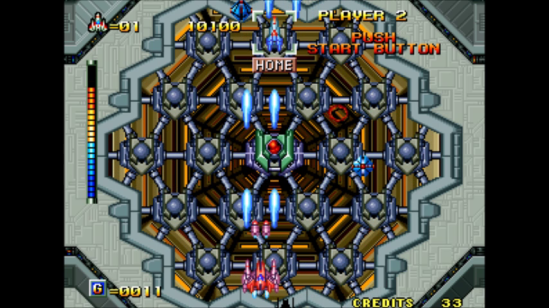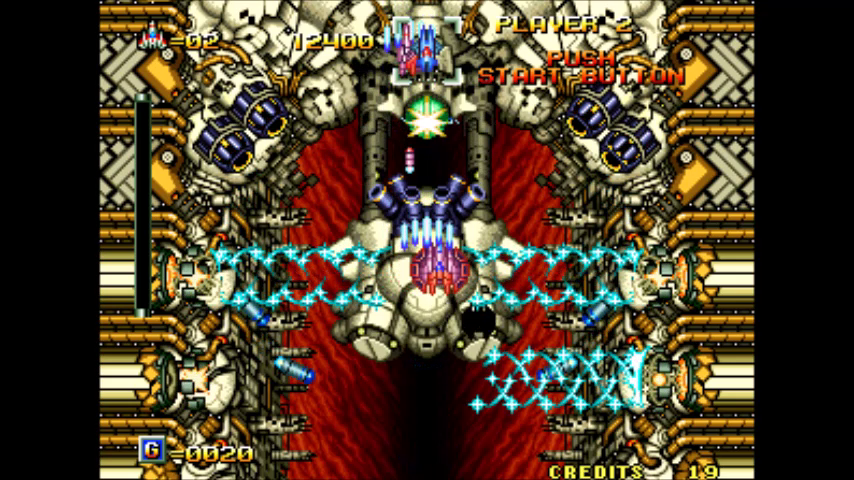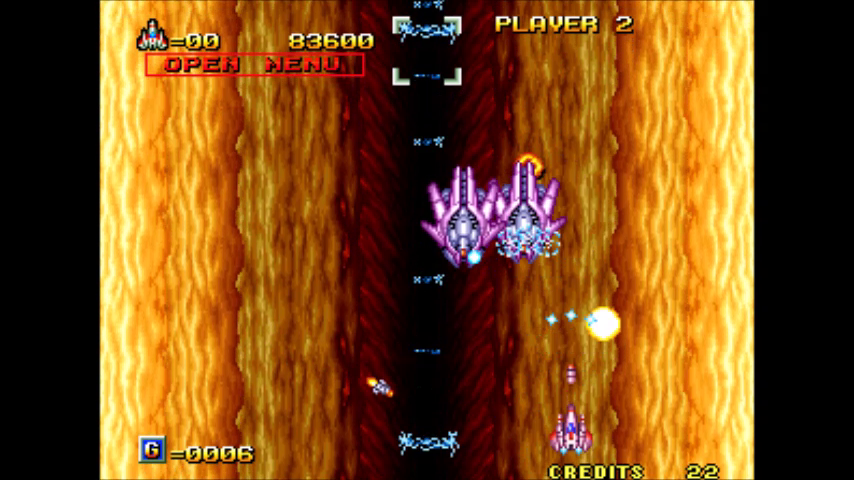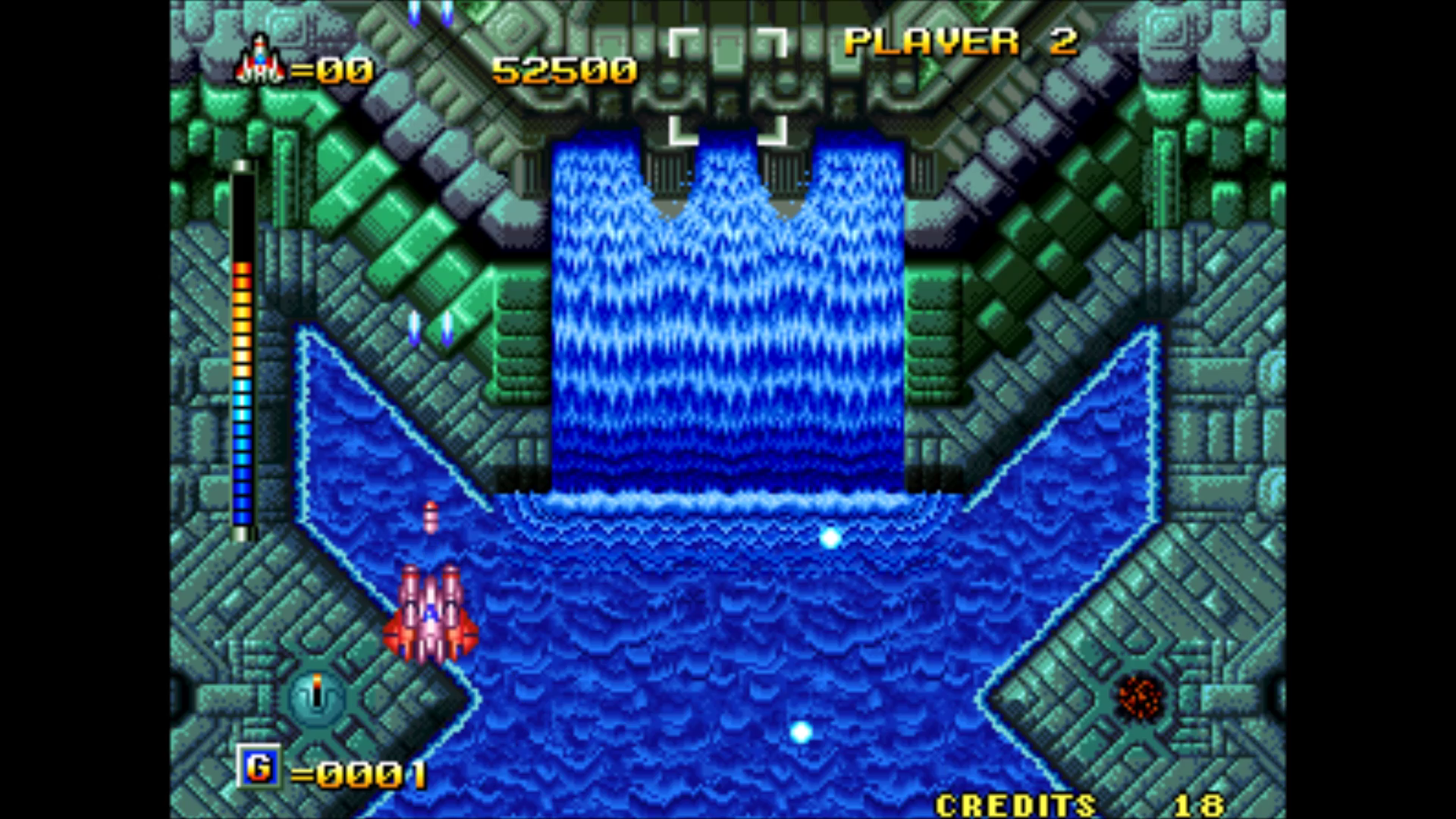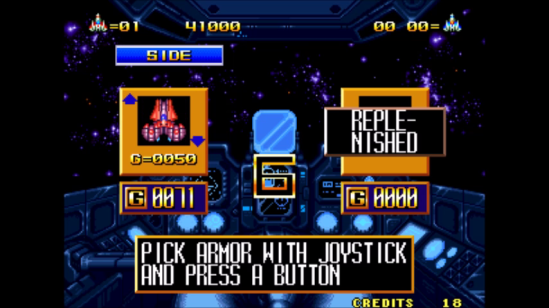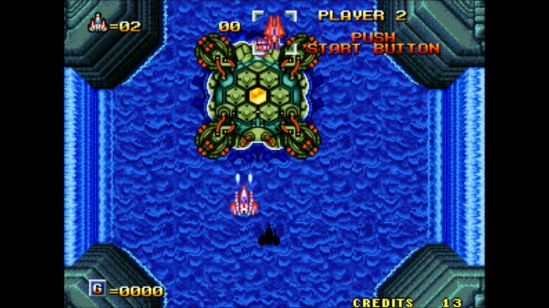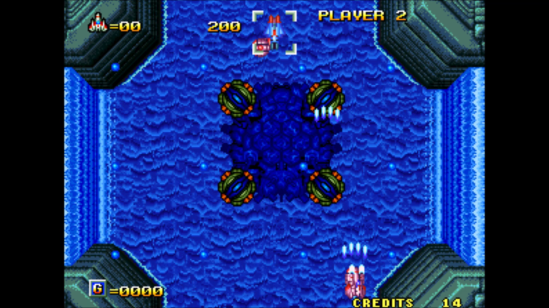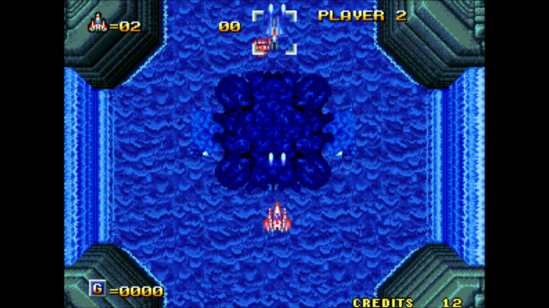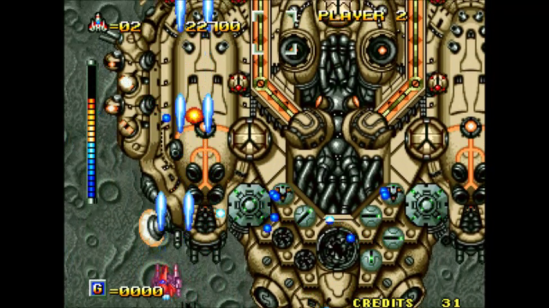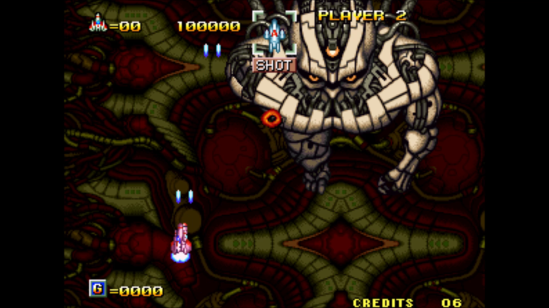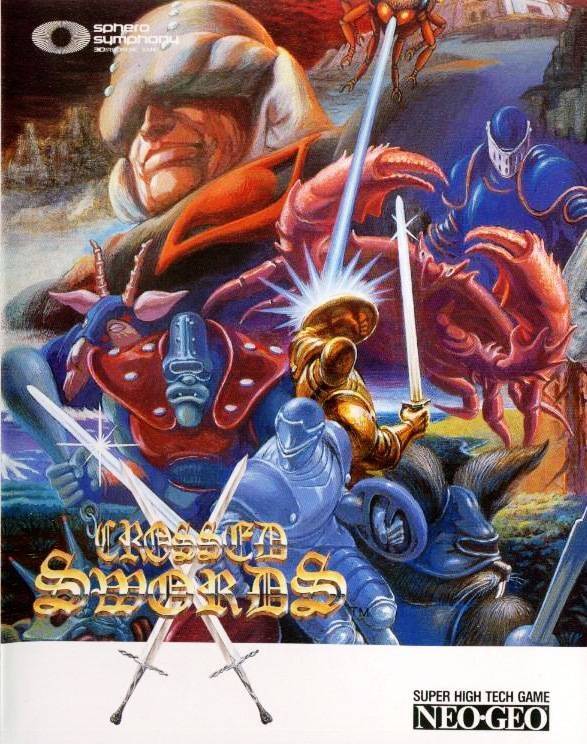
Developer: ADK
Publisher: SNK
MVS Release Date: 25/July/1991
AES Release Date: 1/October/1991
MEGASHOCK GIGAPOWER Video Review
Today on 100 Days of MEGASHOCK! we’ll be looking at Crossed Swords, a fantasy themed behind-the-back view beat em up. Released on July 25th, 1991 in Japanese arcades on MVS, this is ADK’s 4th game on the Neo Geo hardware.
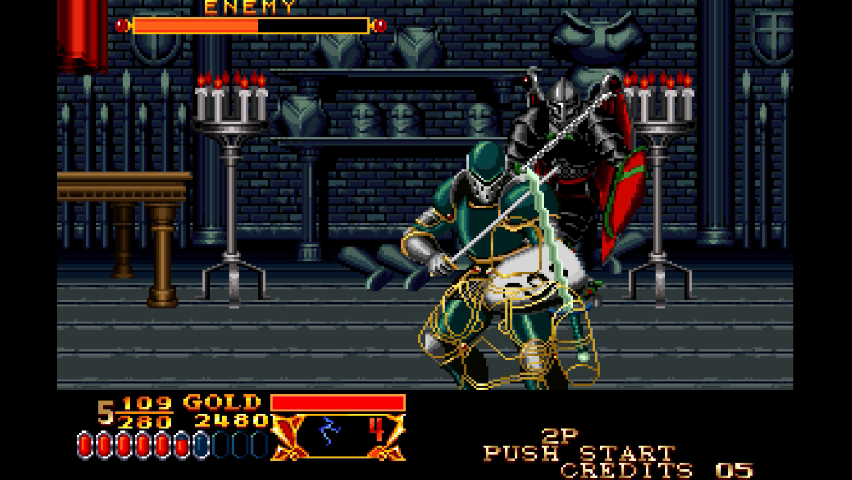
Crossed Sword is what you get if you take Nintendo’s Punch-out!!, particularly the original arcade version, put wire-frame Little Mac in a suit of armor, and have it set in a medieval fantasy world, where you fight against monsters terrorizing the countryside with middle ages weaponry and magic.
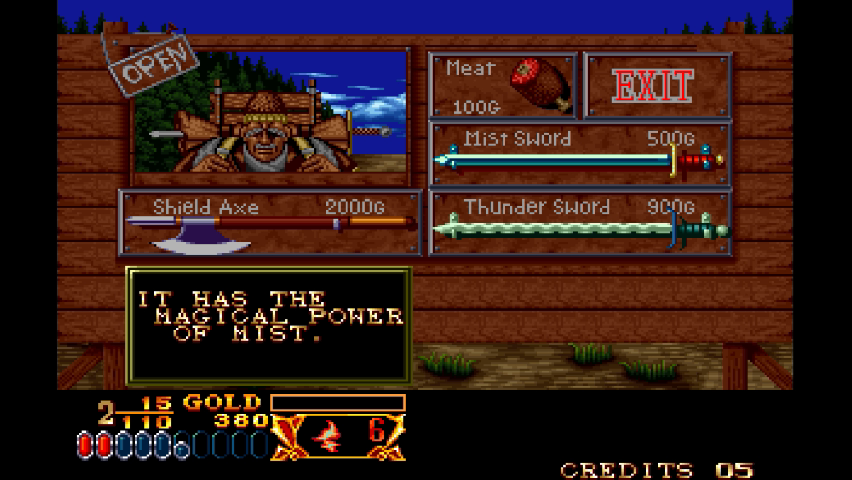
We’ve seen something similar to Crossed Swords on the Neo Geo already with The Super Spy. While Crossed Swords is not in first person, both games use an up-close detailed view that focuses on one-to-one combat, rather than fighting multiple enemies at the same time, as is often the case in your usual belt-scroller beat em up.
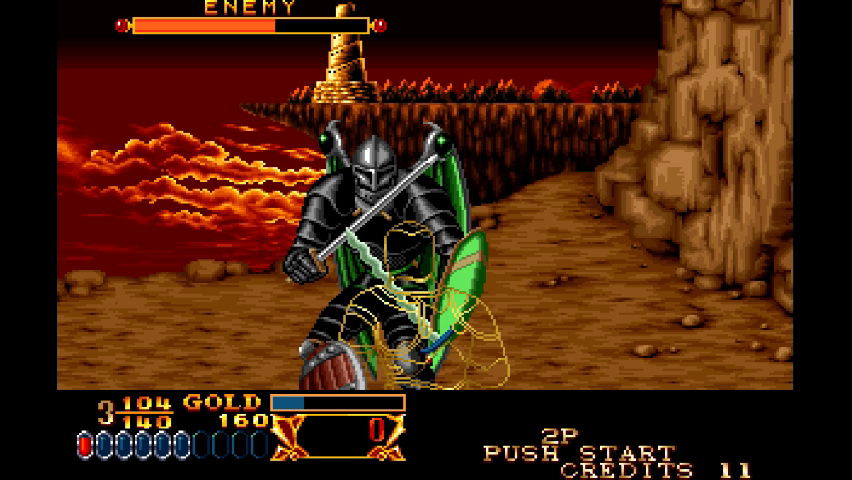
Crossed Swords closer simulates fencing, and that means there’s more of an emphasis on blocking, dodging, and counter-attacking than The Super Spy, or your standard beat em up. In that sense it’s even more like Punch-out!!
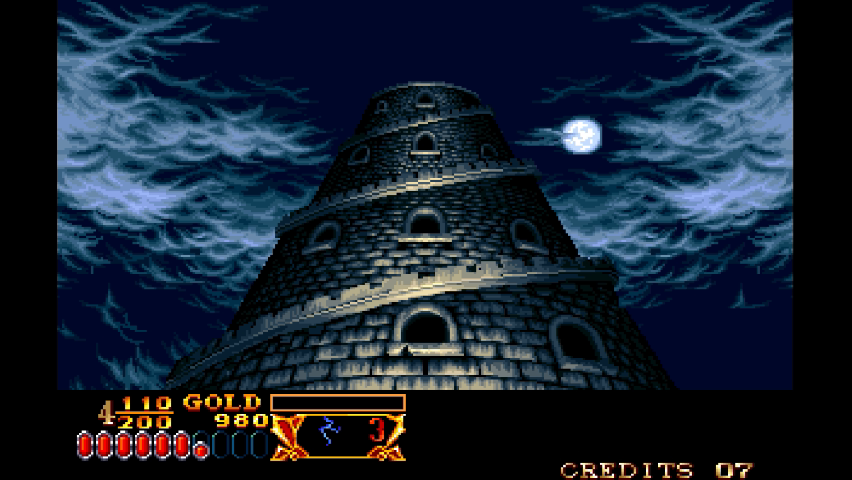
Control in the game goes as follows. “A” Button does a head-level slash. Down+”A” does a body-level stab. “B” does a magic spell. Holding Up lets you block high head-level attacks, while holding down blocks body-level attacks. Pressing A & B together does different types of special attacks that consume a small chunk of your health. Neutral “A & B” does a flurry attack which deals a lot of damage. Up with ”A & B” does a long range hadouken fireball move.Pressing “A & B” while getting hit, or while blocking an attack, or at any other time with Down + ”A & B” has you doing a burst move that pushes the opponent away to a further lane, giving you some space. Sure it costs a bit of health, but spending half a bar to get out of a combo that would take multiple chunks of your life bar is a good trade, rather than risk trying to block subsequent attacks.
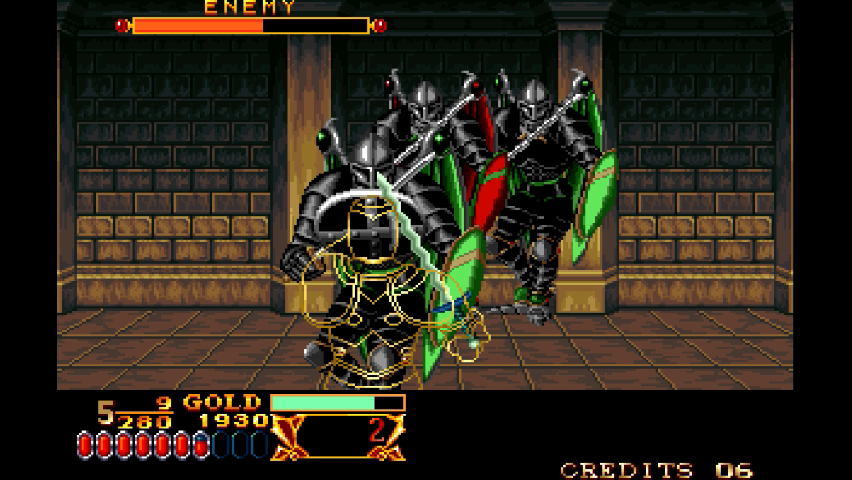
And blocking forms a crucial part to playing Crossed Swords, especially later on. After a certain point, you start fighting enemies that almost always block your preemptive attack, so the strategy shifts to playing defensively, waiting for them to attack, then either blocking or side stepping and then counter attacking. Any blocked attack will almost always leave the other side open for a counter attack, so blocking yields a definitive punish, but it requires correctly reacting with a high or low block. Side stepping on the other hand, can make you avoid this 50/50 ordeal, but because of the small space, you might not have room to dodge away, and even if you do, you might not be able to sway back in time to punish their whiffed attack, and if your late your attack might then be blocked, and you’d eat a counter attack.
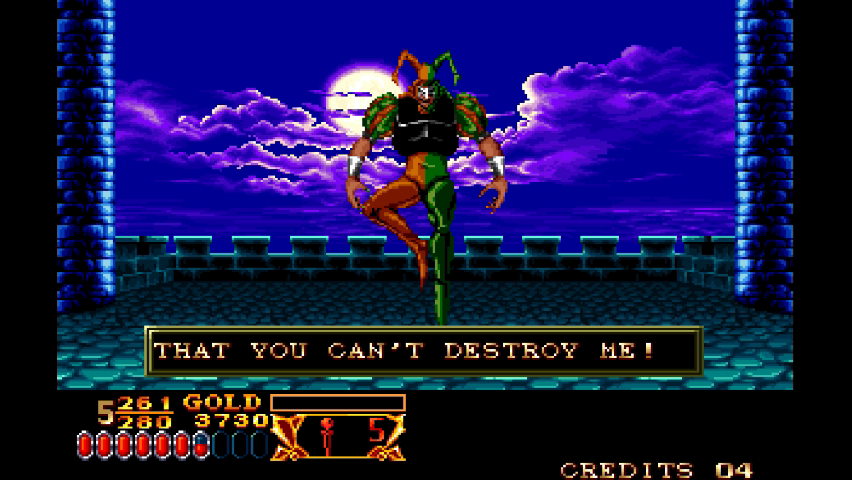
In some cases you might need to both side step and block an attack to survive. For example, this bug monster in the screenshot below shoots a very fast stream of fire that’s quite hard to react to with the correct block. The stream lasts so long that you cannot completely avoid it with a side step as the firebug will track you, but what you can do is side step to give yourself time to see if the fire stream is aimed at the head or body level, and then you can block it correctly once the stream aligns with you. This was one of those moments when the game clicked with me and I started to appreciate it way more.
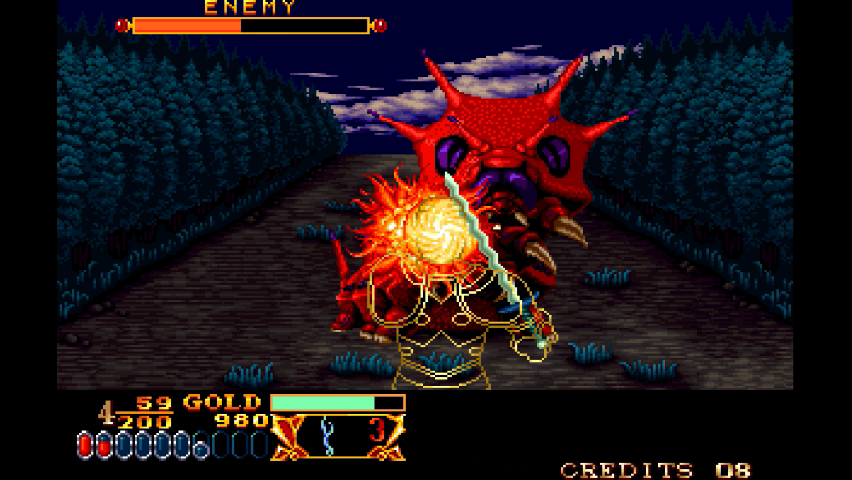
Throughout the game you accumulate gold, which you can use to buy better weapons or life-replenishing meat from a merchant who appears in-between stages. I assume the better weapons deal more damage, but they also change up the magic which ranges from long range single-target fireballs, to a squigly magic attack that hurts nearby enemies, to an all-enemy hitting spells, to a lightning spell and others. The coolest one though is a spell that turns the enemy to a vulnerable scarecrow that you can dispatch in a single quick 4-hit combo. Sadly, this spell won’t work against some of the bigger bosses. But by far the most useful magic spell is the protective shield spell. It lets you block any attack, leaving the other side open for a guaranteed counter-attack, even on bosses. The spell lasts for a long time each use, and you get plenty of stocks to use it.
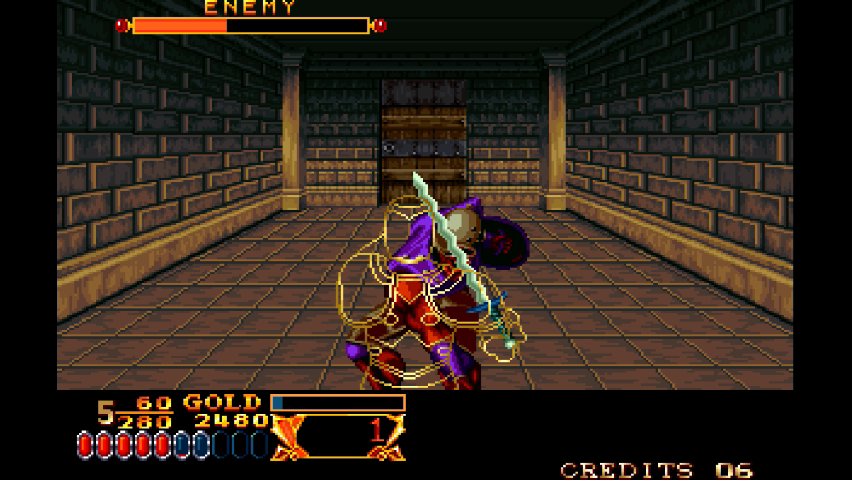
Crossed Swords also has RPG-style “levels”. You get experience points from “Stage Points” and “Enemy Points” tallied at the end of the stage. Leveling up increases your total life gauge and I assume your attack damage. There’s also selectable routes that pop up throughout the game, adding variety to multiple playthroughs. Right here you can choose to either go to the starboard or port side of the ship, or at the beginning of the game you can choose one of 3 routes, or sometime later when you are tasked with storming a fortress, and you can choose to either take it head on, or infiltrate from the back side.
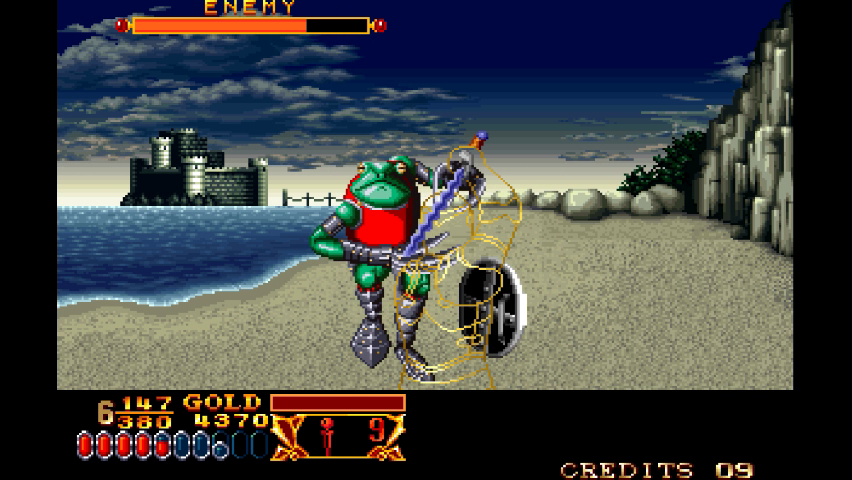
Then there’s the sword meter. This meter is linked with your damage output. The fuller it is, the more damage your attacks do. This meter starts out full, flashing when so, but it depletes whenever you do actions like holding the shield to block, or having your attack be blocked or evaded, or if you yourself get hit. The meter then recharges if you’re not doing any of these actions.
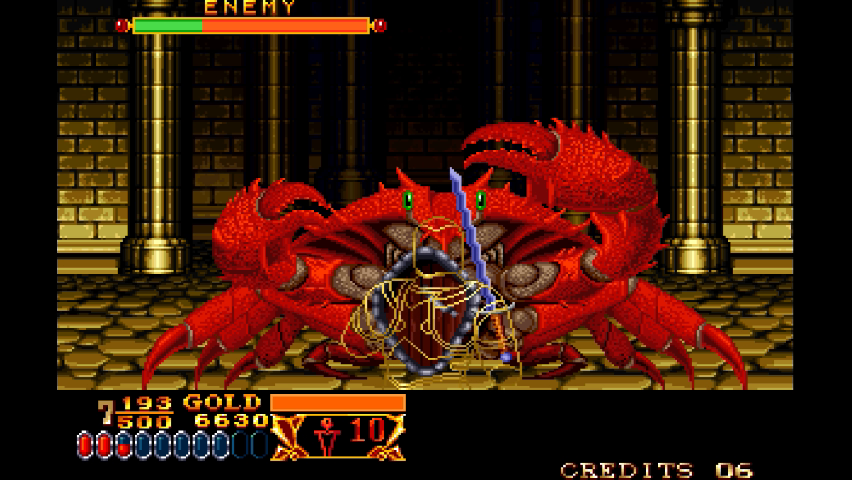
What this all intends is for you to regulate your actions and play in a more cautious manner in order to maximize your damage output. Holding the shield out all the time just to cover one body part from attacks is far from optimal play. You have to conserve and only hold your shield out when an attack is incoming. Slashing wildly won’t work in your favor either, even if those slashes could randomly hit weaker enemies. You have to be deliberate in your defense with shield usage, and in your offense if you want to survive later levels. and the damage difference between full meter and empty is vast. At full meter, the standard 4-hit combo takes a big chunk of health, while the same combo done when the meter is empty only does about as much as 1 hit when the meter was full. The sword meter is pretty much identical to how the sword meter works in Samurai Shodown V, and the intention is the same. It’s antithetical to how most fighting games and action games reward aggression and being active, and I think that’s pretty cool and unique.
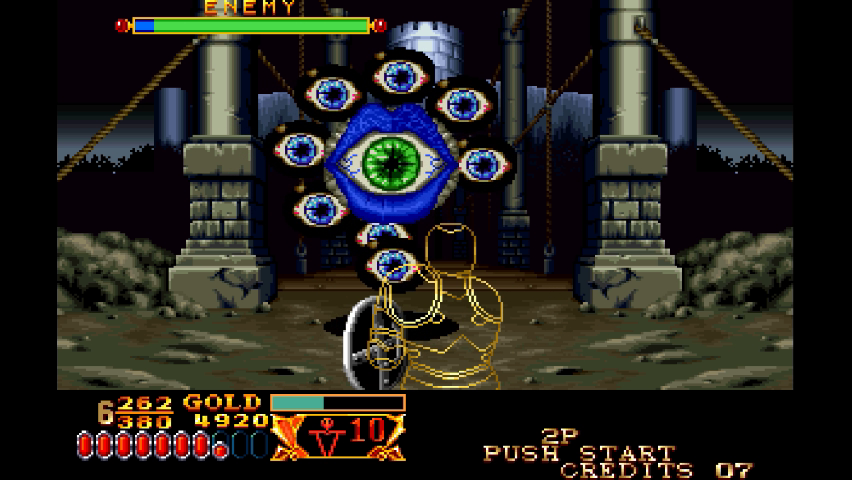
And I have no privacy (ooh ooh)”
All this meshes together to make a genuinely fun game. When I first played through Crossed Swords, I found that what started out as an enjoyable beat em up turned plodding, tedious and difficult later on, but once I understood the more nuanced mechanics, it got much better quickly. Learning the “signs and tells” of enemy attacks to react to with a block, or choosing to avoid the guessing game with a side step, using the “A and B” burst move after getting hit, or gambling more of your life by trying to block subsequent combo attacks for a more immediate punish, knowing when to use magic attacks and special “A+B” attacks, or saving them for later, and managing the sword meter, all of these help build an engaging combat system. It’s a system that allows for different levels of success after a fight, from barely surviving an encounter, to completely decimating the opponent. The former is exciting in a tense way, and the latter exhilarating in a triumphant way, and unlike The Super Spy, Crossed Swords feels much more deliberate in its design.
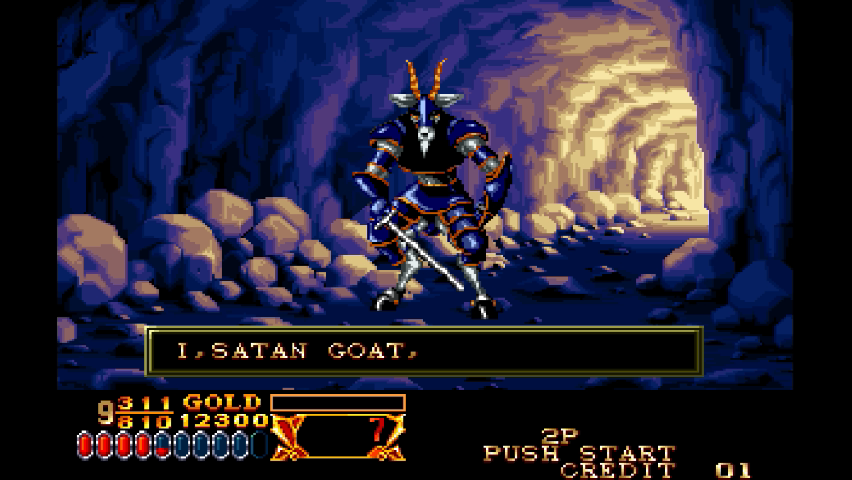
Aside from the Neo Geo CD, Crossed Swords never got ported to any system for some time. It wasn’t ported on contemporary 16-bit consoles like the SNES or SEGA Genesis, nor was it ported to the Saturn nor Playstation, and it didn’t appear on any of the various SNK or Neo Geo collections on PS2. The first port since the original was for the Japanese Virtual Console for the Wii in 2011, but it did recently got ported under the Hamster Arcade Archives series and is available on PS4, Xbox One, and Nintendo Switch.
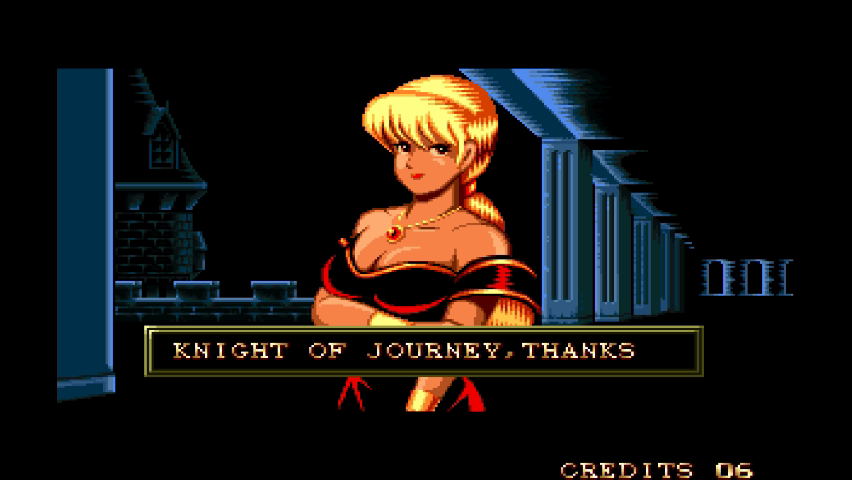
Crossed Swords did get a sequel in 1995 with Crossed Swords II, which was one of the very few Neo Geo CD-exclusive games. Crossed Swords II, however, did get ported unofficially to AES/MVS thanks to Neobitz. This unofficial port does seem to lack the CD soundtrack, which seems to have been replaced with music from the original cartridge game.
